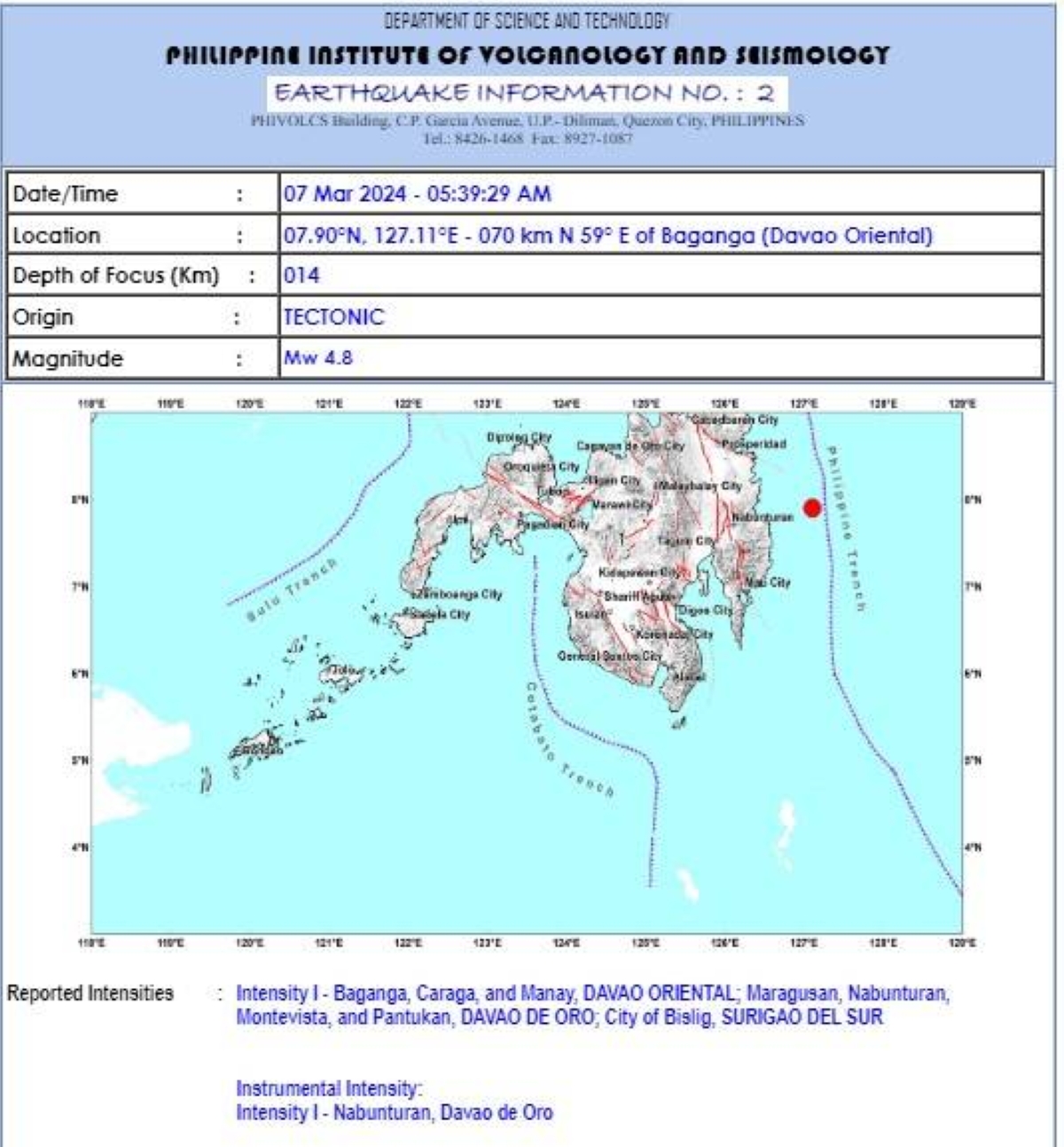In the early hours of Thursday morning, residents of Davao Oriental, Philippines experienced a magnitude 5.0 earthquake, according to the Philippine Institute of Volcanology and Seismology (Phivolcs). The tremor occurred at approximately 4:19 a.m., around 70 kilometers northeast of the town of Banganga.
Phivolcs Director Teresito “Toto” Bacolcol provided further details, stating that the earthquake had a depth of focus of 17 kilometers and was of tectonic origin. The agency’s 5:37 a.m. earthquake information report indicated that residents in Lingig, Surigao del Sur felt an intensity level of 3, while those in the City of Bislig experienced an intensity level of 2. Similarly, Tandag City in Surigao del Sur and Cabadbaran City in Agusan del Norte recorded an instrumental intensity level of 1. Fortunately, no significant damage to infrastructure has been reported thus far.
It is important to note that the Philippines is located in the Pacific Ring of Fire, a region known for its seismic activity. As such, earthquakes are not uncommon in this area. The Philippine government, through Phivolcs, has taken proactive measures to monitor and provide timely information about seismic events to ensure the safety of its citizens.
While the earthquake in Davao Oriental had a magnitude of 5.0, it is crucial to understand what this measurement signifies. The magnitude scale is logarithmic, meaning that each whole number increase represents a tenfold increase in the amplitude of the seismic waves. Therefore, a magnitude 5.0 earthquake is considered moderate and can cause shaking that is felt by people, especially those near the epicenter.
In terms of intensity, the Modified Mercalli Intensity Scale is used to assess the effects of an earthquake at specific locations. Intensity levels range from I to XII, with I being the least perceptible and XII indicating total destruction. In this case, Lingig experienced an intensity level of 3, which means that shaking was felt noticeably by individuals indoors, especially on upper floors of buildings. Bislig, on the other hand, reported an intensity level of 2, indicating that shaking was felt by some people, particularly those on higher floors or in buildings.
It is worth mentioning that the recorded intensity levels may vary depending on local factors such as building design, soil conditions, and distance from the epicenter. Therefore, it is crucial for residents to remain vigilant and follow any safety guidelines provided by local authorities.
Director Bacolcol also mentioned the possibility of aftershocks following the main earthquake. Aftershocks are smaller earthquakes that occur in the same general area as the mainshock. While they are usually not as strong as the initial earthquake, they can still cause additional damage to weakened structures. It is essential for residents to be prepared and aware of the potential for aftershocks in the coming hours or days.
In conclusion, the magnitude 5.0 earthquake that struck Davao Oriental serves as a reminder of the ongoing seismic activity in the Philippines. It is crucial for residents to stay informed, follow safety protocols, and be prepared for any future seismic events. The Philippine government, through Phivolcs, continues to monitor the situation closely and provide valuable information to ensure the safety and well-being of its citizens.







